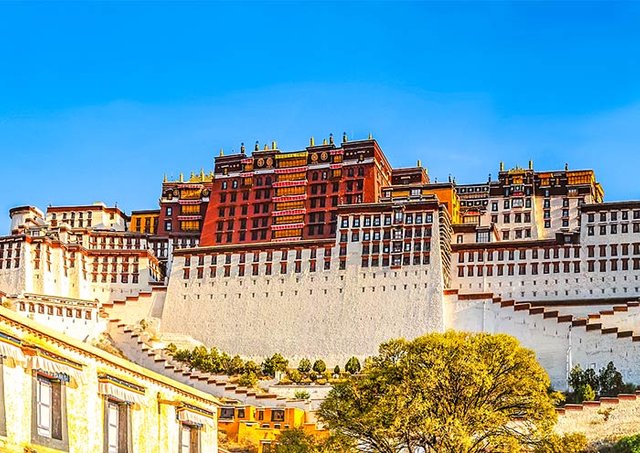Potala Durbar Tibet
The Potala Palace, often called the Potala “Durbar,” is a historic architectural marvel in Lhasa, Tibet. Originally built as a winter palace for the Dalai Lama, it serves as a symbol of Tibetan Buddhism and a spiritual and political landmark. The structure, which dates back to the 7th century but was expanded in the 17th century by the 5th Dalai Lama, showcases traditional Tibetan architecture and is known for its massive stone walls, gold-plated roofs, and intricate interior spaces.
The Potala Palace

is divided into two main sections: the White Palace, which served as the living quarters, and the Red Palace, dedicated to religious study and Buddhist prayer. Inside, you’ll find many sacred artifacts, manuscripts, and vibrant murals that illustrate Tibetan history and Buddhist mythology.
In 1994, Potala Palace was designated a UNESCO World Heritage site due to its cultural and historical importance. It stands on Red Mountain and offers stunning views of the surrounding area, drawing visitors from around the world for both its beauty and its significance in Tibetan culture.